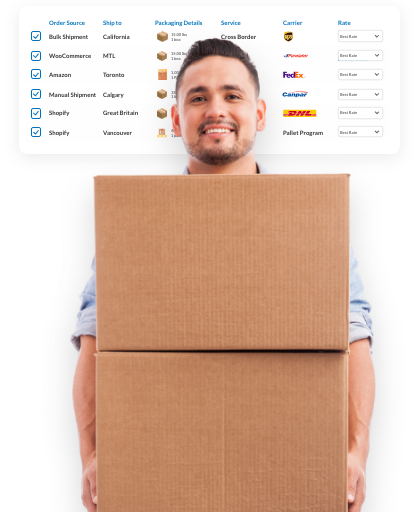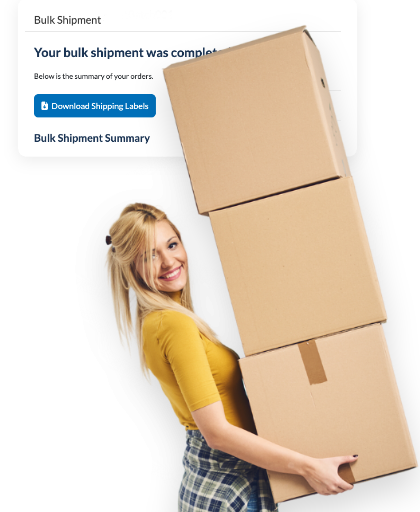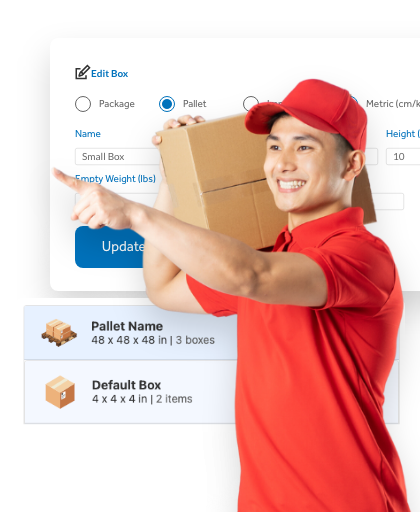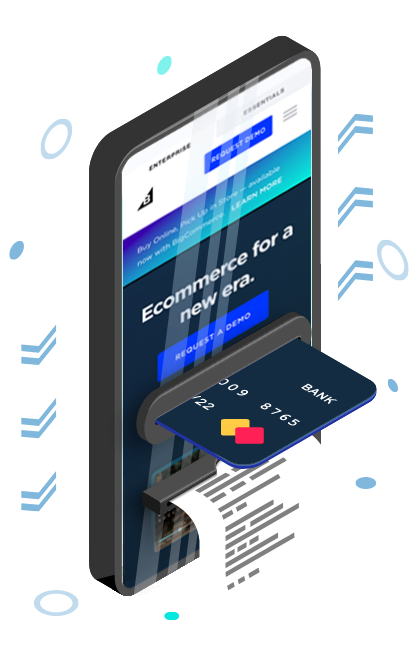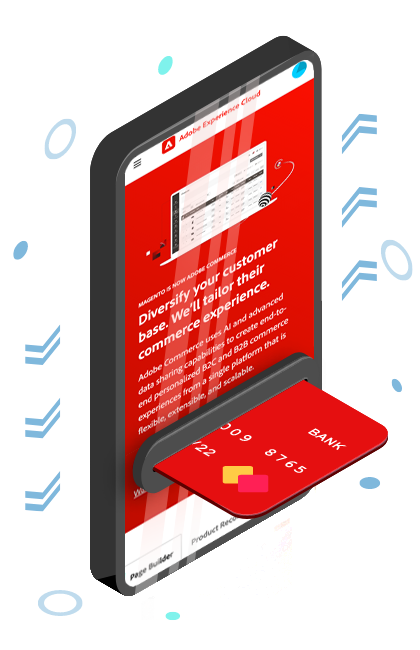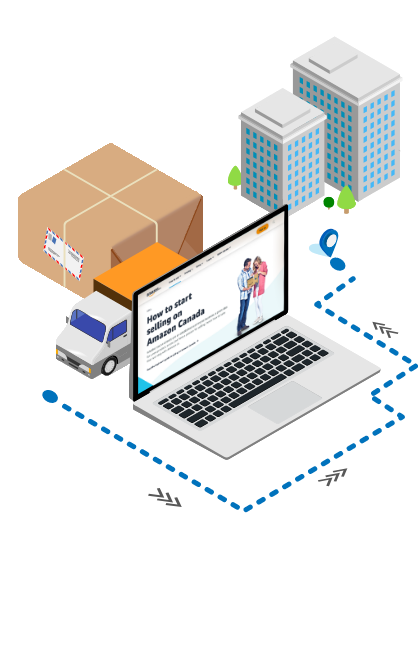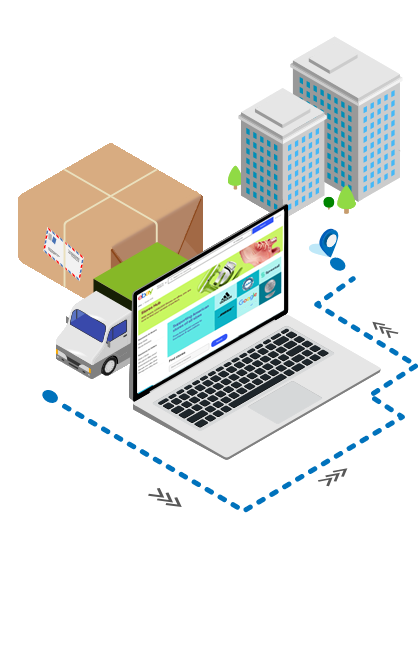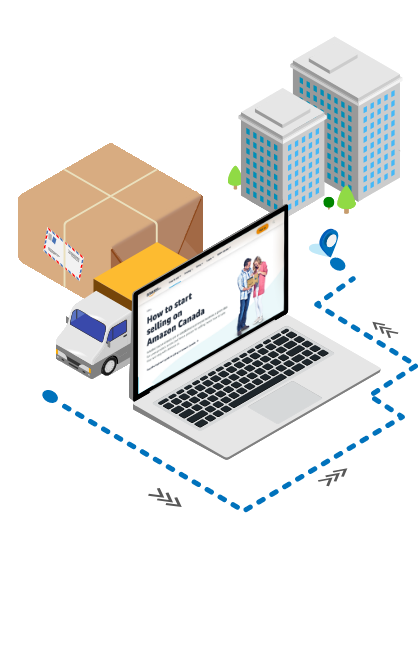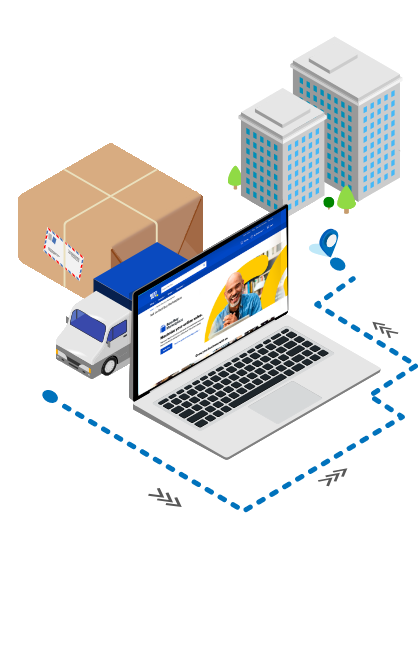ClickShip’s Complete 2025 Cross-Border Shipping Guide

(Updated September 4, 2025)
Many experienced eCommerce entrepreneurs can attest to the fact that a solid cross-border shipping strategy is a must. For most Canadian business owners with an eCommerce presence, expanding their customer base south is a key milestone, and offering affordable, reliable cross-border shipping is instrumental in that.
However, recent changes to cross-border trade policies, particularly when shipping to the US, have made taking this step potentially more difficult, especially for newer or first-time cross-border shippers.
With that in mind, we decided to compile this comprehensive guide to help eCommerce newcomers and veterans alike make sure that you’re shipping your cross-border orders the right way.
Fulfilling Your First Cross-Border Shipment: A Checklist
Below is a step-by-step checklist of all the things you need to account for when you start fulfilling your first cross-border orders.
Research Customs Regulations
Understand the customs regulations and requirements for importing goods into the US. Familiarize yourself with the Canadian Border Services Agency (CBSA) guidelines to ensure compliance.
Determine Import Duties and Taxes
Calculate the applicable import duties and taxes for your products. The Canada Border Services Agency's website provides resources for determining the duty rates based on the Harmonized System (HS) code of your goods.
Obtain an Import/Export Business Number
Apply for an Import/Export Business Number (BN) from the Canada Revenue Agency (CRA). This unique identifier is required for customs clearance purposes and enables you to report and remit taxes.
Choose a Shipping Method
Select a reliable shipping method that offers tracking and ensures timely delivery. Consider using a courier service or partnering with a fulfillment provider experienced in cross-border shipping.
Complete Shipping Documentation
Prepare all necessary shipping documents, including a commercial invoice, a packing list, and a certificate of origin if applicable. Accurate and detailed documentation is essential for customs clearance.
Remember Your HTS Code
Shipments being imported into the US require the 10 digit HTS Code to be listed. Failure to enter the full 10 digit HTS code may result in shipments being returned.

Package Goods Securely
Properly package your goods to protect them during transit. Consider using appropriate padding, sturdy boxes, and secure packaging materials. Ensure that your packages are labeled correctly with both the shipping and return addresses.
Fill Out Customs Forms
Complete the required customs forms accurately and provide detailed information about your products, including their value, quantity, and description. These forms typically include the Canada Customs Invoice (CCI) or a commercial invoice.
Declare the Goods
Declare the contents and value of the shipment accurately. Be transparent about the merchandise and its purpose to avoid customs issues or delays.
Prepay Customs Duties and Taxes
To expedite the customs clearance process, consider prepaying the import duties and taxes before shipping the goods. This can be done through a customs broker or using the CBSA's electronic payment system.
Track the Shipment
Monitor the progress of your shipment using the tracking number provided by your shipping carrier. Stay informed about any updates or delays to address any potential issues promptly.
![]()
Prepare for Customs Clearance
Be prepared to provide additional documentation or information if requested by the customs authorities. Respond promptly to any inquiries or notifications regarding the customs clearance process.
Understand VAT and Provincial Sales Taxes (PST)
Research the applicable Value Added Tax (VAT) and Provincial Sales Taxes (PST) in Canada. Determine whether you need to register for and collect these taxes based on your sales volume and the province in which you sell your products.
Customer Service and Returns
Establish a clear customer service process to address any inquiries, concerns, or returns from your cross-border customers. Provide comprehensive information about returns, warranties, and any associated fees.
Cross-Border Shipping Mistakes to Avoid
Skipping Shipping Insurance
When cross-border shipping you need to be prepared for uncertainties that come with the shipping process. Stolen merchandise, damaged shipments, accidents, piracy, natural disaster, etc. are all unfortunate events that are heightened due to the longer transit times and multiple touchpoints during transit. Furthermore, these issues can cause deliveries to be delayed Impacting your customers experience with your company.

Being Careless with Carrier Choice
As you search for affordable rates you will want to ensure the company you are doing business with can offer responsive customer service and have the technology in place to monitor the shipment.
With proper technology in place your merchandise will be better monitored and tracked to reach the desired destination in its intended condition. Reading reviews left by customers can identify and indicate any red flags with companies you are planning to ship with. Pre-test shipments before busy seasons or launching your product to cross-border destinations to ensure the stability of the chosen carrier.
Skimping on Your Packaging
The packaging you utilize for your merchandise can impact your business in multiple ways. The way you package your shipping is important in both reducing the risk of damage, and the perception your customers have of your brand.
If you use a box that is too big, your customers may view your business as having too much waste as it requires more dunnage (packaging materials) to protect the product inside. In addition, using a box that is unnecessarily large means that you are paying more for shipping.
Carrying a wide variety of packaging sizes allows you to reduce the cost of supplies, mitigate protentional damage of the product, reduce shipping costs, reduce return merchandise and show your customers an environmentally friendly unboxing experience.

Miscalculating Your Packages
When selling your merchandise, it is important to factor in the weight and dimensions of the product and package by measuring it properly. Measure your packages using the outside box measurements. Round up on both weight and dimensions to ensure accurate pricing. Be aware that each mode of transportation and each carrier has specific weight and dimension limits that when exceeded can lead to hefty charges.
Shipping carriers weigh the packages at their routing centers, to which they determine the “chargeable weight”. This is done usually on the routing conveyor by digital measuring devices with a high degree of accuracy. If the weight or dimension that is entered to produce the shipping label is different then that of the chargeable weight, a chargeback will be issued for the shipment.
The best way to measure the exact product weight and dimensions is to do it before and after packaging.
Not Setting Shipping Expectations with Customers
In many cases, shipping your products cross-border will simply take longer than shipping them domestically. With customer expectations for shipping at an all-time high, this has the potential to impact your customer experience negatively unless proper steps are taken to set customer expectations.
Having clear, upfront shipping information readily available on your online storefront can help to eliminate potential confusion. This can be reinforced by offering estimated shipping times directly at checkout and providing end-to-end real-time tracking on your shipments.
Tips for Shipping LTL Cross-Border
Whether you’re sourcing goods from the US, shipping pallets to your customers, or anything in-between, this section covers some key information you need when you need to ship pallets cross-border.
Ensure All Your Documents are Accurate
While this is true of all shipments, the importance of complete and accurate documentation is even more vital when discussing cross-border shipments, particularly for inspection at the border.
Including the proper documentation will not only make it easier for border guards to do their jobs, but will also prevent potential delays, or even seizure of your shipments. You will require the following documents:
Certificate of Origin
A document declaring a shipment’s country of manufacture. Required as part of the USMCA.
Customs Invoice
A document declaring the value of goods contained in a shipment. Sometimes known as a Pro Forma Invoice.
Bill of Lading
A document that acts as a deed of title, as well as a contract between the shipper, consignee, and carrier.
The Certificate of Origin: Your CUSMA Passport
While all the above documents mentioned prior are vital for the successful journey of your goods, the suspension of the US de minimis has made CUSMA compliance more important than ever.
In order to prove CUSMA eligibility, a completed certificate of origin is necessary for all goods shipped. While there is no formal template for the certificate of origin, the following nine pieces of information must be included for it to be valid:
- Importer, exporter, or producer statement certifying the goods as originating under CUSMA
- Information including the name, phone number, and email of the person completing the certificate
- Exporter information, if different from the certifier
- Producer information, if different from the certifier and/or exporter
- Importer information, if known
- Accurate description of goods & 6-digit HS code
- The rule under Article 4.2 that applies to the goods
- The blanket period, up to 12 months, over which the certificate covers multiple shipments of identical goods, if applicable
- Authorized signature of the person certifying and date certified
Organize and Clearly Label Everything
When preparing your cross-border shipment, you'll need to determine the tariff classification number. This number, in combination with your shipment’s country of origin, will help you determine the duties you will need to pay on the shipment.
While a customs broker can identify which tariff classification will apply to you, You can also determine your classification through the Harmonized Tariff Schedule Search.
If your shipment contains a variety of items within it, remember to label all goods clearly and accurately. This will not only save time and prevent potential confusion in the event that your shipment is inspected at the border, but it is also a courtesy to your customer or consignee, as itemized labelling will help make the process of sorting the shipment faster and easier once it reaches its destination.
Estimate Your Duties and Taxes
Even with the Harmonized Tarriff System in place, determining duty rates isn’t easy. Many variables can affect duties, and being thorough in estimating those duties can be essential in making sure your shipment is not held at the border on account of them being unpaid.

ClickShip’s 2025 CUSMA Compliance Guide
To help eCommerce shippers navigate the recent changes in US trade policies, we’ve put together the 2025 ClickShip CUSMA Compliance Guide—a simple, straightforward resource featuring easy-to-follow tips on HS classification, documentation, and supplier management, plus strategies to help you stay audit-ready and protect your bottom line.
Whether you’re sending parcels or freight, this guide will help you cut through the red tape, ship smarter, and keep your business moving smoothly across North America.
ClickShip Helps You Save on eCommerce Shipments of All Sizes, No Matter Where They’re Headed!
ClickShip’s all-in-one platform integrates seamlessly with the leading eCommerce platforms and online marketplaces to give you access to discounted rates on parcel and pallet shipping from the most trusted carriers in North America, as well as a robust suite of shipping and fulfillment tools to help streamline your order management, all for zero upfront or monthly fees!
Contact one of our shipping experts and see how ClickShip can help you expand your eCommerce business’ borders for less!

Written by Brandon Draga
Brandon Draga is a full-time content writer at Freightcom, the leading shipping solution for businesses in Canada. When Brandon is not writing content to help businesses with their shipping needs, he can be found at local skate parks or writing fantasy novels.
Learn how ClickShip can help speed up your fulfillment process with our innovative, all-in-one shipping solution.
Focus on running your business. We’ll ship orders for you — as soon as they come in.

